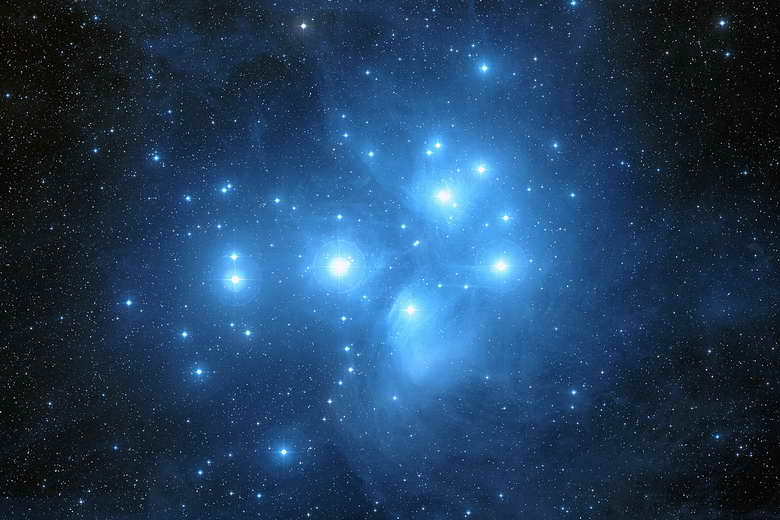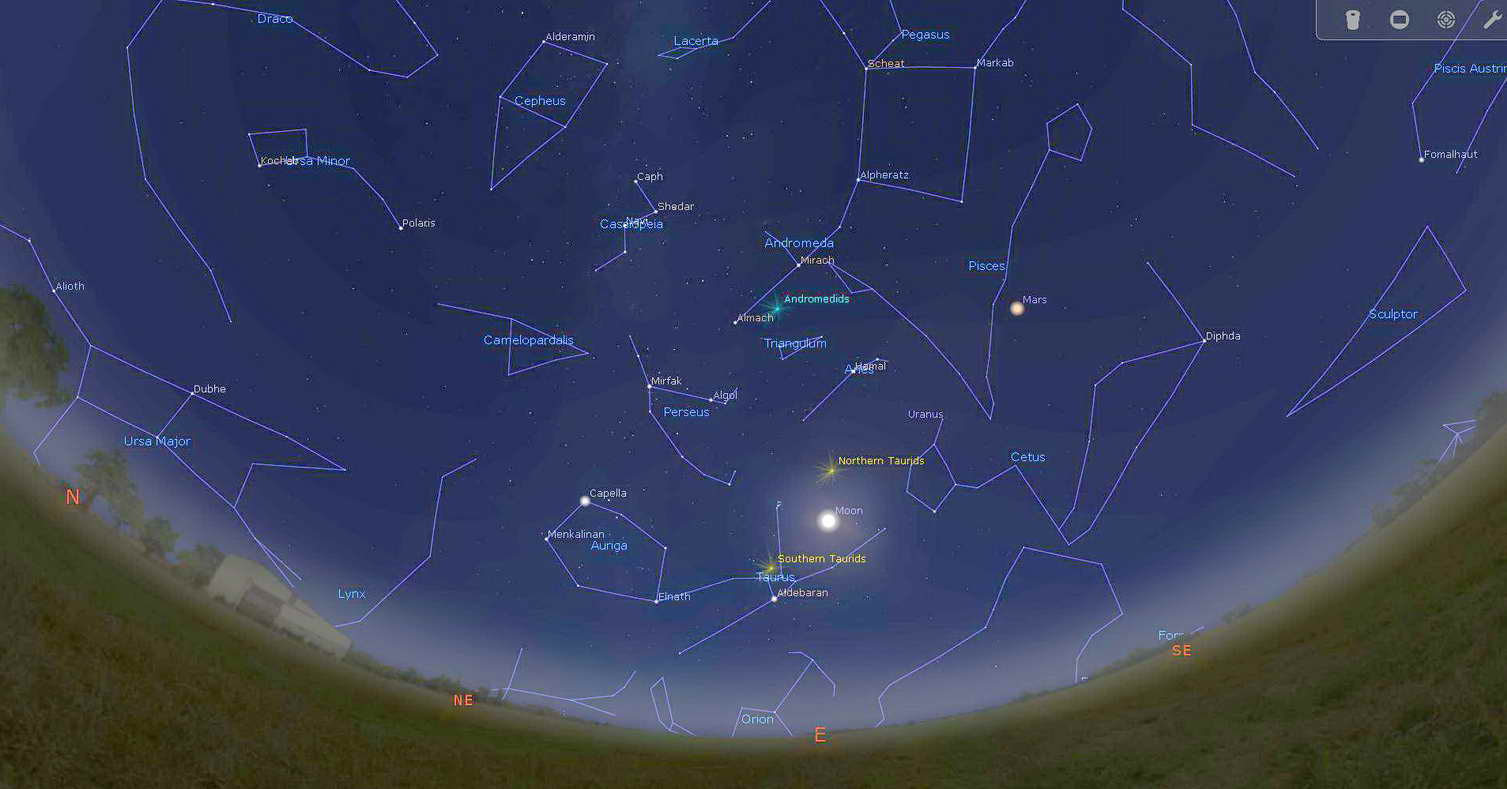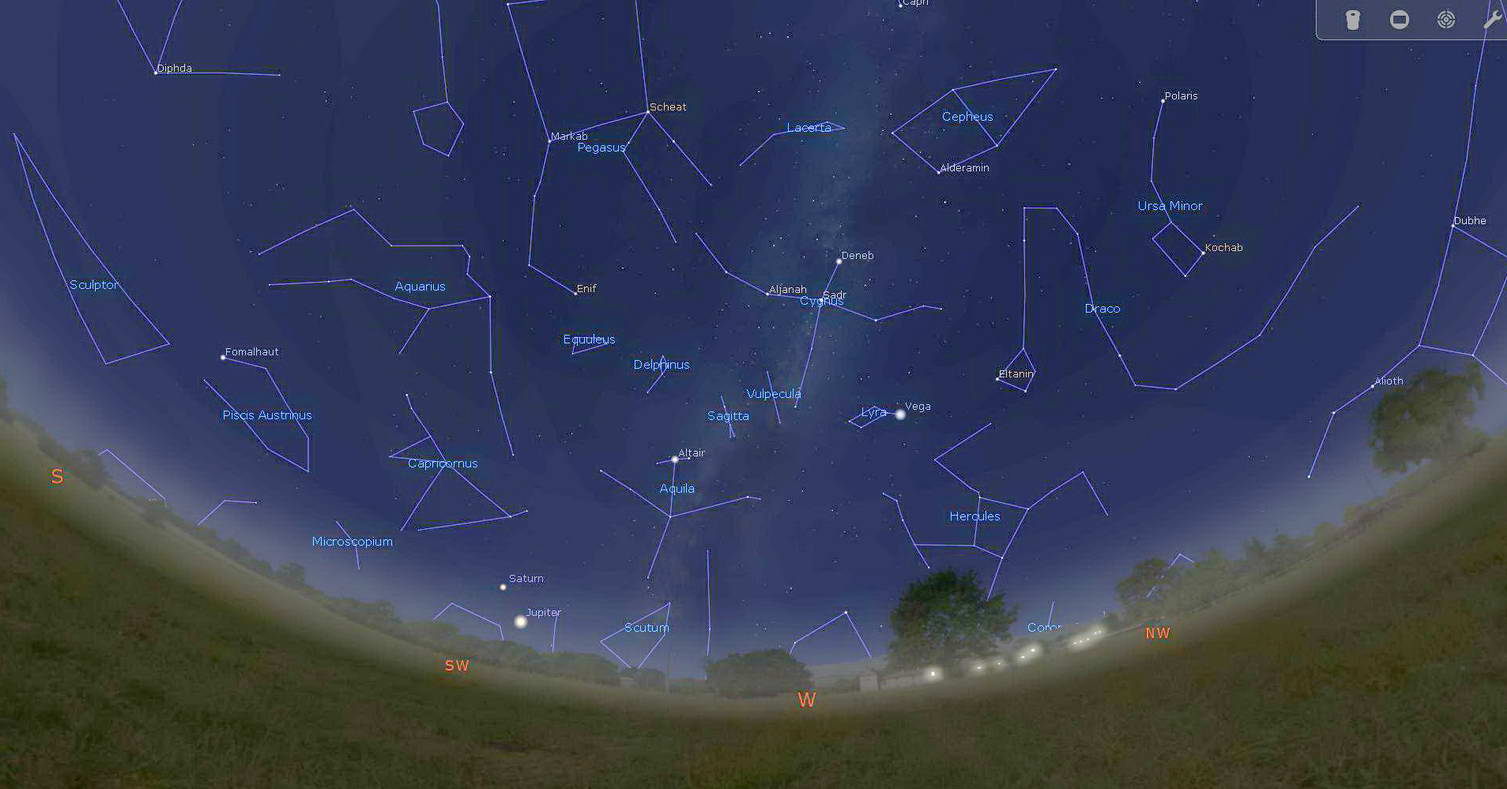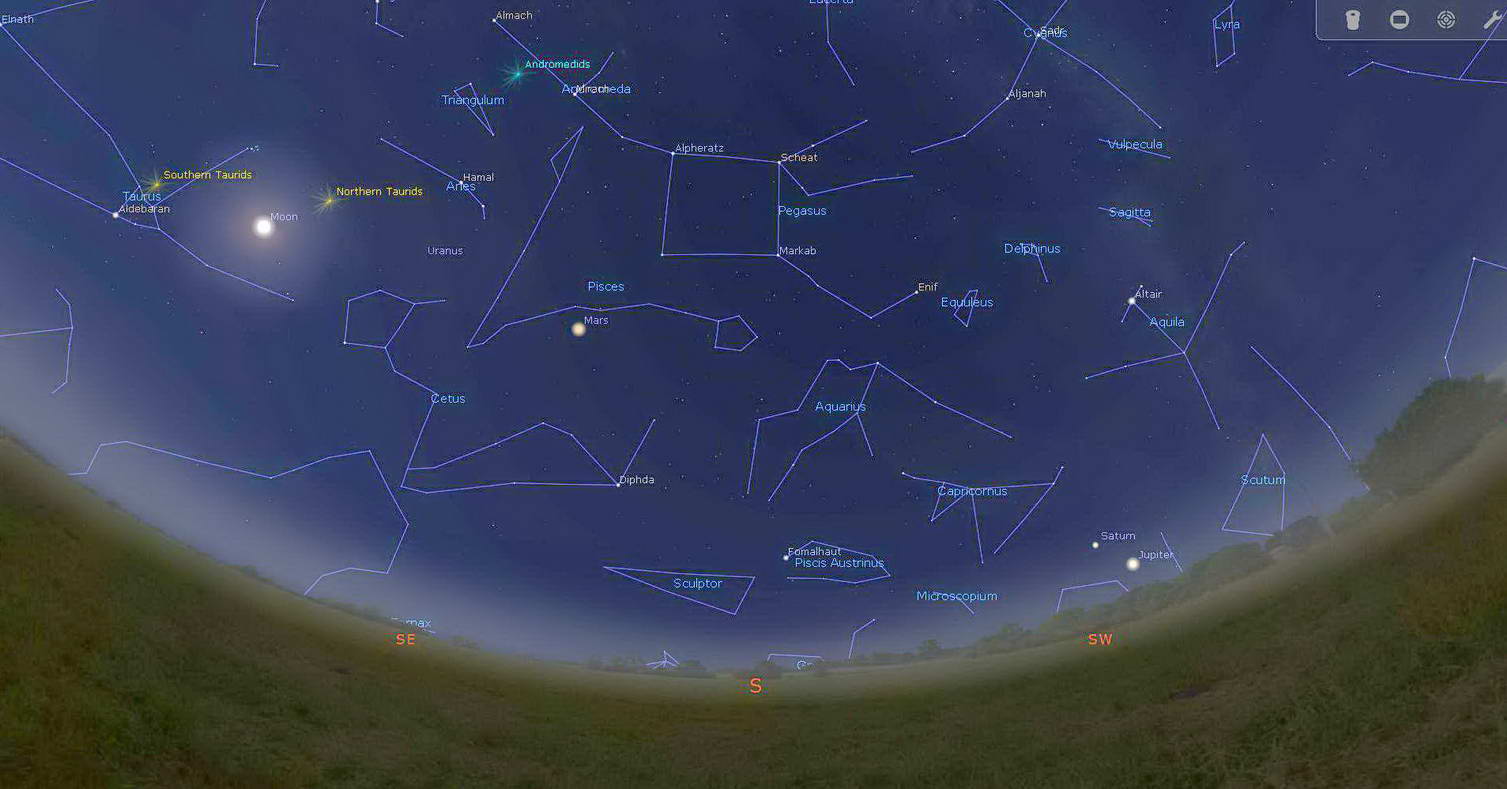The November Night Sky
Growing up in the Great Lakes region, the month of November and “cloudy” are linked in my mind. Without looking back at weather tables, this is the month that seems like it has more than its fair share of cloudy, damp stretches which seem to last for weeks on end. I have a memory of 1985, waiting to see Halley’s Comet for the first time. It had been steadily brightening and was just below visual magnitude. I seem to remember having to wait for nearly two weeks to get an opening in the clouds. Then, finally, around mid-month, the skies cleared. I grabbed the binoculars and went out to the yard. It was worth the wait, the round, fuzzy ball of Halley’s Comet was very near to the Pleiades star cluster and a very nice visual image.
The past couple of months of this column have been a tribute to the big gas giants of the Solar System; Jupiter, and Saturn. Their time in the evening sky for this year is nearly finished. As darkness falls, you can still see them in the southwest, but they will appear lower each night. You have to get them early if you still want to see them in the evening night sky.
Mars got a little attention last month, too, as it was making a very nice close approach. It’s odd walking outside at night and seeing the Red Planet outshining Jupiter. I hope you got a look through even a modest telescope. We were socked in by clouds around the closest approach here, but the planet will still offer very good views throughout this month. As darkness arrives, it is high in the southeast, impossible to miss.
Mercury and Venus
If you are up in the early mornings of November this month, you may want to try to find Mercury and Venus. Because their orbit around the Sun is inside of Earth’s, Mercury and Venus show a much different path through the sky than the outer planets. They essentially describe an elongated loop, appearing higher in the sky each subsequent appearance, until they reach the top of the loop and then begin a descent. Venus, due to its distance from the Sun and its brightness is the easiest to see. It is the brightest object in the sky with the exception of the Sun and Moon. If you look to the East in the early morning hours, you will see it blazing brightly above the Horizon.
Mercury is a much more difficult challenge. It is fainter and closer to the Sun. The apparent loop that it makes never gets very high above the horizon, nor does the planet have enough brightness to escape the glare of the Sun as the sky brightens. Mercury will be about 19 degrees away from the Sun on November 10, which is as far away as it will be, and the easiest night to spot it.
The easiest way will be to locate Venus, then look down closer to the horizon. You should be able to find the star Spica below Venus. If you look to the left just a bit, you will see a “star” slightly brighter than Spica. This is Mercury! One of the challenges Mercury presents in morning appearances is the race between the brightening sky and the rising of the planet. Objects close to the horizon are dimmed by the amount of atmosphere we have to look through. They get clearer and brighter the higher they rise for the first 10 to 15 degrees or so. Mercury, though, as it rises, is so close to the sun that the sky is getting brighter with each degree the planet climbs. You have to catch it at the magic time when it is high enough to be seen clearly, but the brightening sky hasn’t drowned it out yet.
This month provides you an opportunity to see all of the naked eye planets in one night. If you start at sunset and pick up Mars, Jupiter, and Saturn, and then look in the morning sky to see Venus and Mercury, that’s all of them! The rest are generally too dim, although some people with good eyesight and really dark skies have been able to see Uranus. After that, you will need a telescope to see the rest of them.
More to See in the November Night Sky
The night sky of November 11 and 12 brings us the Northern Taurids Meteor shower. This is not a lesser shower, with fairly low rates of meteors. However, it has been known to produce its share of fireballs, which are spectacular. I have only been fortunate enough to see a couple of them in my lifetime, but if you catch one you will never forget it. Some of them are bright enough to light up the landscape while they burn through the atmosphere. In some cases, people have even reported hearing sonic booms! You will get a dark night for this meteor shower as the Moon doesn’t rise until the morning hours. This shower also benefits from a radiant point that rises early in the evening meaning the best viewing is pretty much all night. I would suggest 10 PM as a good start time.
Just a few days later on the night of November 16 and 17, the Leonid Meteor shower will peak. This is a long-running shower, with an interesting story. Every 33 years or so the Earth passes through a thick clump of material which can produce rates of up to 1000 meteors an hour! Unfortunately, this isn’t the year for that, although on occasion “off” years have produced some very heavy activity sporadically through the night. Expect about 15 meteors per hour from this shower. Again, the Moon will not be a problem, and viewing after 10 PM will be good, providing you have a clear, dark night sky.
Next month we will take a closer look at some of the spectacular deep-sky objects that dazzle in the winter months of the Northern Hemisphere. For now, I would like to mention the Pleiades Star Cluster in Taurus. It’s an easy one to find, being visible without any aid. Located in Taurus, it is a bright group of stars that is relatively close to us. This star cluster is immersed in a shimmering blue nebula that is really hard to see even with a telescope but shows up beautifully in photographs. It’s a good test to see how dark your skies are. Count the number of Pleiades you can see, if you see more than 7, you have a decent sky! This is also one worth turning a pair of binoculars on, as it brings out even more stars. It is a good one to fire up any child’s imagination.
Finally, the Moon continues to do its thing, waxing and waning throughout the month. We start with a moon just one day past full on November 1st with New Moon occurring on November 15. One of the fun challenges here is to see who can spot the tiniest sliver of a crescent in the days following New Moon. On November 30 the full Moon is enhanced by a partial lunar eclipse as the Earth passes between it and the Sun. The Moon will dim slightly and may take on a slightly reddish hue, but the effect will not be nearly as pronounced as during a full lunar eclipse when the Moon slips fully into Earth’s shadow.
If you find this little column interesting, please like and share. I would also encourage you to leave feedback in the comments. Let me know what you like and what you might want to know more about. I’ve been looking at the stars for most of my life, and enjoy sharing what I have learned about the night sky with you.
Starmaps courtesy of Stellarium for PC
Feature Image of M45 courtesy of Davide De Martin & the ESA/ESO/NASA Photoshop FITS Liberator at spacetelescope.org
Published on October 28, 2020 / Information provided based on approximately 40 degrees north Lattitude and approximately 1 – 2 hours after sunset.









Appreciate the guide to the sky. I am always curious what planets the bright ones are in the early morning on my way to work.